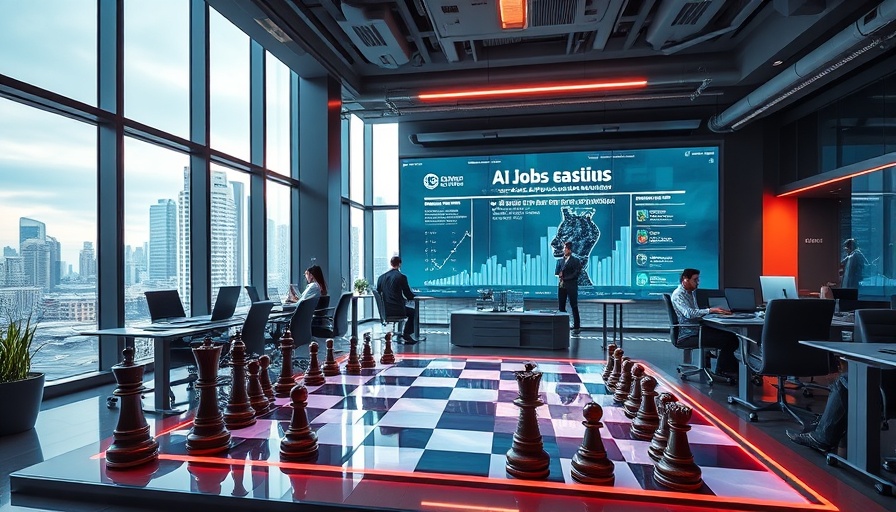
The Shifting Landscape of AI and Employment
As artificial intelligence rapidly integrates into the corporate landscape, visions of a transformed workforce circulate among industry leaders. Major players, including Amazon and Ford, predict daunting reductions in white-collar jobs, forecasting job losses between 10% to 50%. This shift primarily targets sectors such as banking and manufacturing, industries traditionally reliant on human labor.
Understanding AI's Impact on Job Dynamics
While apprehension regarding AI’s impact on employment burgeons, it juxtaposes a hopeful narrative from proponents of AI. These voices emphasize the importance of adaptability, as increased automation not only eliminates certain roles but also cultivates new opportunities in fields like AI development and data analysis. The argument proposes that the future labor market may pivot toward a blend of efficiency propelled by technology and the originality inherent in human creativity.
The Need for Retraining and Upskilling
Amidst these forecasts, the call for retraining and upskilling is louder than ever. Experts advocate for comprehensive programs designed to equip workers with the skills necessary to thrive in an evolving job environment. While predictions about impending job displacement can be alarming, they serve as crucial reminders of the ongoing need for adaptability in skillsets. By embracing upskilling, individuals can navigate the disruptions posed by technological advancements.
Industries at Risk: Predictions vs. Reality
Discussions surrounding the most vulnerable sectors foster significant discourse. Although banking and manufacturing are highlighted as likely candidates for disruption, it's essential to consider that the timelines for these disruptions remain uncertain. Despite forecasts, some industry experts contend that the reality may not unfold as dramatically as anticipated. They urge a balanced view, suggesting a more measured approach that recognizes potential growth areas alongside risks.
Mitigating Adverse Effects of AI on Employment
The debate around AI's implications extends beyond predictions; it encompasses strategies to alleviate potential job losses. Proposed solutions emphasize government involvement, which may include retraining programs tailored to transitioning workers into emerging roles, alongside initiatives that support vulnerable sectors. The dialogue stresses the necessity for policies that promote synergistic relations between technology and human labor, ensuring that automation complements rather than eclipses employment opportunities.
Conclusion: Preparing for the Future
As we navigate the uncharted waters of AI integration in the workforce, it's clear that while challenges lie ahead, there are also avenues for growth and adaptation. The conversation has shifted from mere predictions of job losses to proactive strategies focused on resilience. For those concerned about their future in the jobs market, the time is now to embrace continuous learning and adaptation. Explore the strategies to protect your career in an era dominated by AI.
Bypass ANY AI Detector with ease with Prompt2Human.
 Add Row
Add Row  Add
Add 




Write A Comment